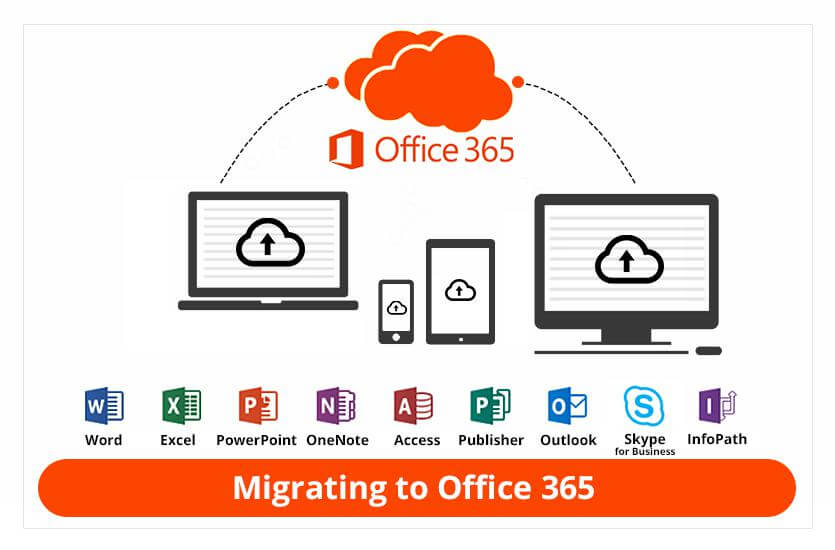Cloud infrastructure migration has become a defining move for companies aiming to modernize operations and improve agility. It refers to transferring digital assets, workloads, and applications from on-premises systems to cloud platforms like AWS, Microsoft Azure, or Google Cloud. This shift is not merely technical; it’s strategic. Businesses migrate to reduce costs, improve scalability, and gain flexibility in managing resources. The process involves analyzing existing systems, designing the right cloud architecture, and executing a smooth transition that minimizes downtime.
Cloud Infrastructure Migration with SKYTEK Cloud enables companies to break free from physical limitations, reduce downtime, and modernize operations. The result is faster deployment, improved collaboration, and seamless access to critical data from anywhere. Whether you’re scaling a startup or transforming a large enterprise, the right cloud migration strategy determines how efficiently you transition into a future-ready infrastructure.
Why Businesses Are Embracing Cloud Migration Strategies
The growing demand for cloud migration services stems from the increasing need for digital transformation and business continuity. Companies are moving to the cloud to escape outdated infrastructure, unpredictable maintenance costs, and limited scalability. By leveraging managed cloud services and virtual environments, businesses can deploy applications faster, automate resource allocation, and handle fluctuating traffic without service interruptions. Moreover, cloud platforms offer built-in redundancy, backup, and recovery options that strengthen disaster recovery strategies.
SKYTEK Cloud specializes in helping businesses shift from traditional on-premise setups to modern, agile, and cost-efficient cloud environments. The process isn’t just about moving data; it’s about rethinking how your business operates in a digital-first economy. A successful migration unlocks flexibility, security, and performance that legacy systems simply can’t match.
Overcoming Common Challenges During Cloud Infrastructure Migration
Despite its benefits, cloud infrastructure migration presents several challenges that require strategic planning. One of the biggest hurdles is data transfer, moving terabytes of information without data loss or corruption. Another common issue involves compatibility, as legacy systems often struggle to integrate with cloud-native tools. Security concerns also arise when sensitive data transitions between environments. The solution lies in thorough pre-migration assessments, data encryption, and using hybrid or multi-cloud strategies where necessary. With proper planning, expert guidance, and robust testing, businesses can overcome migration bottlenecks while maintaining full operational continuity.
The result is faster deployment, improved collaboration, and seamless access to critical data from anywhere. Whether you’re scaling a startup or transforming a large enterprise, the right cloud migration strategy determines how efficiently you transition into a future-ready infrastructure.
Building a Future-Ready Architecture with Cloud Infrastructure
A successful cloud migration is not the end; it’s the foundation for continuous growth. Once workloads are in the cloud, the next step is optimizing cloud infrastructure for scalability, automation, and performance. Businesses should focus on cloud architecture design, leveraging containerization and microservices to build flexible applications. When properly configured, cloud infrastructure enhances both speed and resilience, ensuring systems can adapt to changing demands while reducing the total cost of ownership. This long-term approach transforms IT from a cost center into a value driver.
The Role of Security and Compliance in Cloud Migration
Security remains the top priority throughout cloud infrastructure migration. Transferring data across environments exposes it to potential vulnerabilities if not handled correctly. Businesses must implement strong identity management, encryption protocols, and continuous monitoring to safeguard data. Leading cloud providers offer compliance certifications such as SOC 2, ISO 27001, and HIPAA to support industry-specific requirements. Regular audits, endpoint protection, and real-time threat detection also reinforce trust and reliability. By prioritizing cloud security architecture and compliance frameworks, organizations can confidently scale their digital operations without compromising data integrity or customer privacy.
SKYTEK Cloud begins by assessing your existing environment, identifying what should move, and designing a custom cloud migration strategy that minimizes risk while maximizing ROI. The goal is to balance cost, performance, and reliability so your systems remain stable during and after migration.
Maximizing ROI Through Optimized Cloud Operations With SKYTEK Cloud
After migration, continuous optimization ensures that businesses fully realize the value of their new cloud environment. Cost optimization tools help track and manage usage while preventing overspending. Cloud performance monitoring ensures applications run efficiently and meet SLAs. Automation and AI-driven analytics further enhance decision-making, allowing businesses to predict trends and scale resources intelligently.
Choosing SKYTEK Cloud for Cloud Infrastructure Migration means embracing innovation with confidence. Their expertise in cloud migration strategy, hybrid cloud solutions, data security, scalability in cloud computing, and digital transformation ensures your organization doesn’t just move to the cloud; it thrives there. SKYTEK Cloud turns migration into a seamless, value-driven transformation.



















